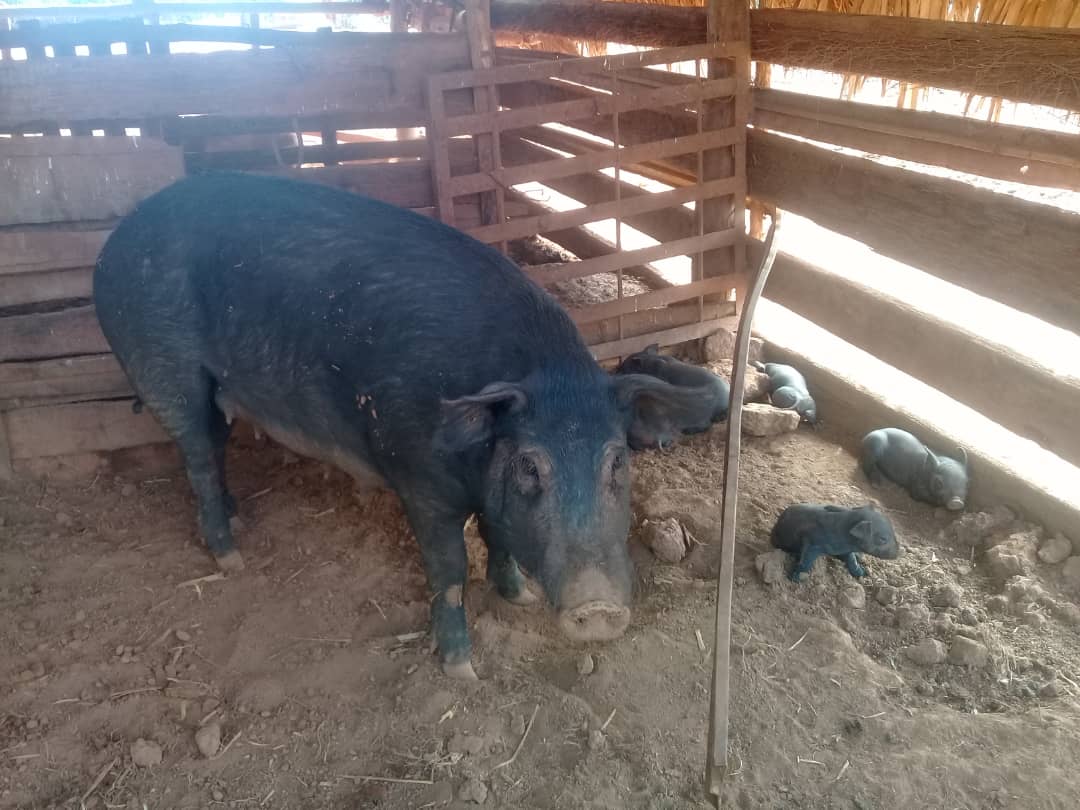
The territory of Ciego de Ávila rescues the breeding of the Cuban Creole pig from experiences that demonstrate economic sustainability, ability to adapt to natural conditions, resistance to diseases and climate change, as well as obtaining higher quality meats.
The alliance between the Center for Research on Bio-food (CIBA by its Spanish initials) and pig farmers from all the municipalities, mainly from Florencia (that concentrates the largest number of producers in the province), is expressed in the growing number of preserves (13 in 2019 and 20 in the following period) and confirms the benefits of the Creole species, whose meats have better texture, taste and smell for fresh consumption and in processed foods.
"As a scientific center, we advise producers for the management and care of this breed, which allows us to provide them with our knowledge and nourish ourselves with their experiences," the Master of Science Yamilé Jiménez Peña, CIBA's Deputy Director of Research, said.
Regarding sustainability and development, the so-called "Chinese pig" constitutes a superior breed, because it does not require large investments: "while the productions of the racial pig are based on traditional foods, those of the Creole species can be feeded with the use of alternative foods obtained with local resources", although certainly the conversion of meat takes a little longer with this last pig breed," he stressed.
The survey Alternatives for feeding the Cuban Creole pig with the use of local resources, developed in the aforementioned scientific institution, demonstrated the feasibility of "worm humus as a local alternative for feeding the Cuban Creole pig in the pre-fattening stage, in substitution up to 20% of conventional food, when there are areas close to its production and proper handling of the product is guaranteed, ensuring a stable supply to the animals”.
According to the results of the study, the animals that were fed 20% worm humus in their diet achieved an average daily gain similar to those that were fed with traditional methods, which showed savings in inputs.
CIBA documentary sources detail that the worm humus or worm compost supplied to the pigs was obtained in three months, through a composting process carried out with worms Eisenia foetida (Californian red) and Eudrilus eugeniae (African red), that use cachaça and bovine manure as a substrate. After a month, the product was dried in the sun for a period of three to five days, depending on the environmental conditions. After grinding, it was subjected to an analysis at the Territorial Soil Laboratory of the province of Camagüey.
The production of food of animal origin constitutes a priority task in the province of Ciego de Ávila. In the specific case of pig farming, the actions are aimed at the improvement and preservation of the Cuban Creole pig, and in recent years, hard work has been done in order to reach the formation of genetic reserve preserves in rural areas and the use of local alternatives feeding.
“Efforts to develop pig farming contribute to the National Program for Food Sovereignty and Nutrition Education, particularly to the commitment to achieve five kilograms of meat per capita. They also respond to local strategies aimed at self-sufficiency to satisfy the needs of the population. These are issues that we will continue to work on by establishing a synergy between science and the productive sectors, in order to achieve the chain to which we are called,” Jiménez Peña emphasized.




